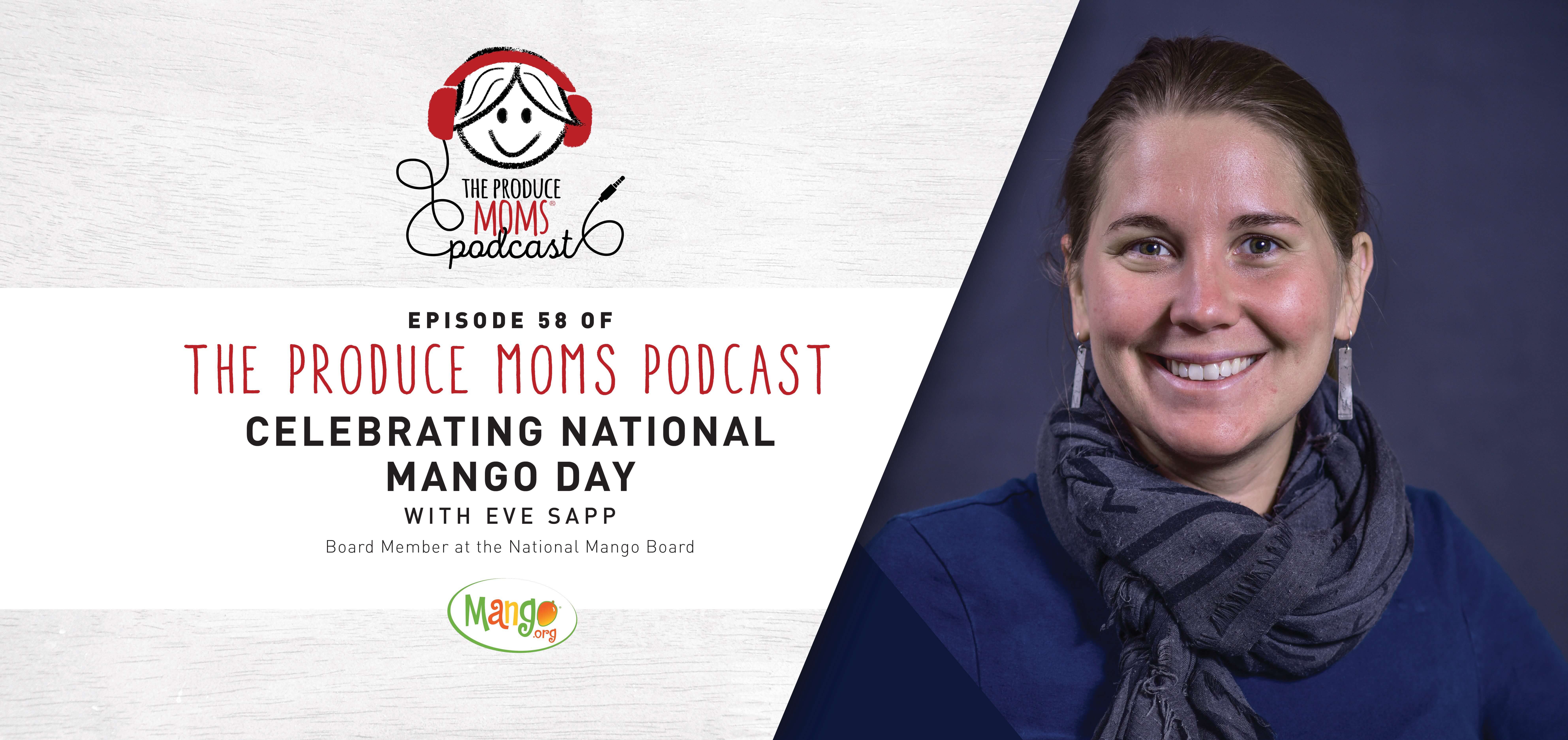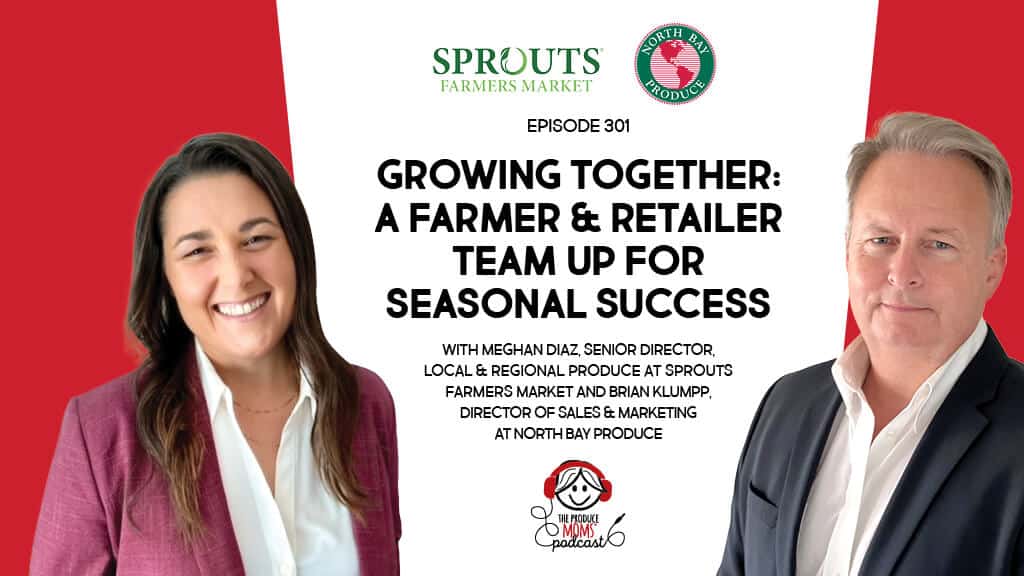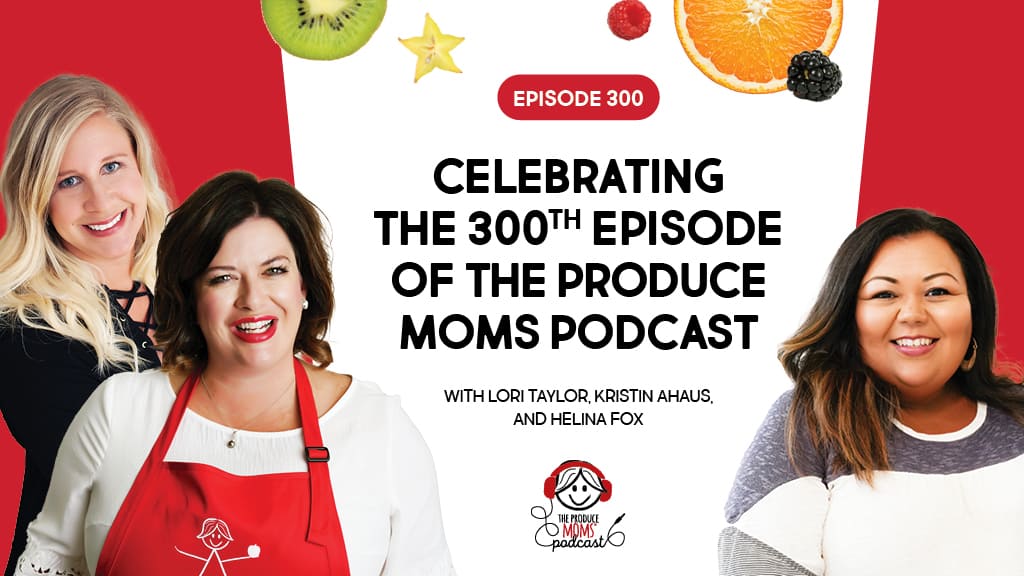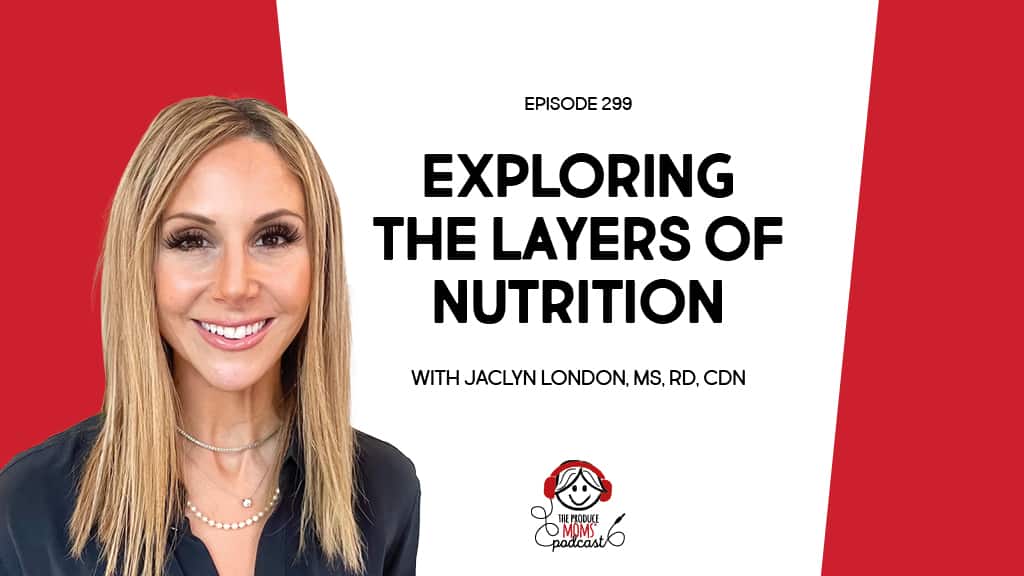Episode 58: Celebrating National Mango Day with Eve Sapp
Jul 22, 2019
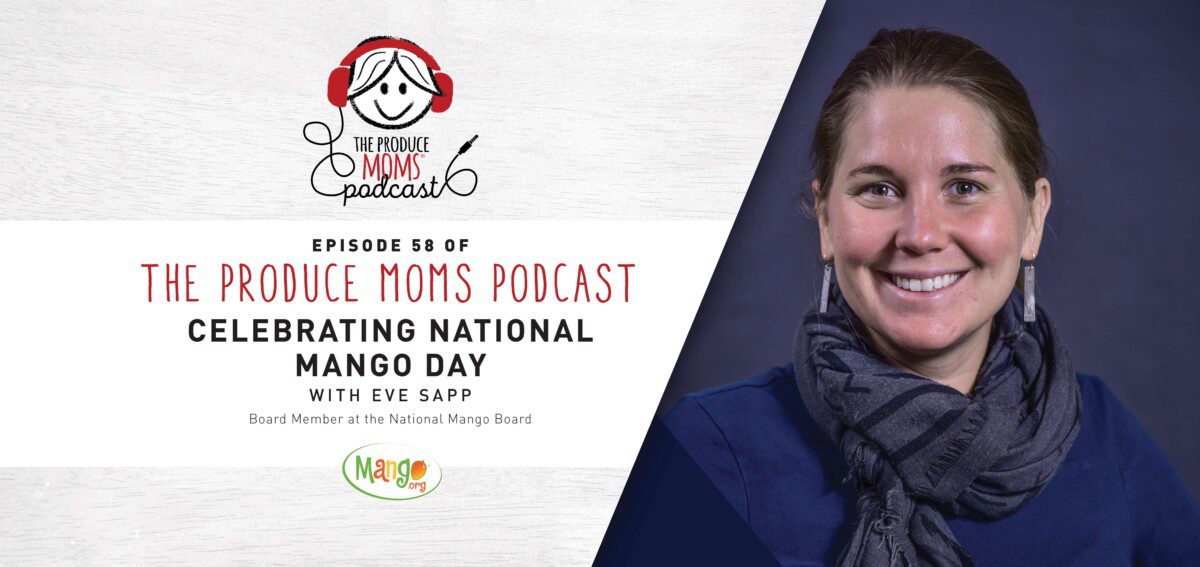
This post may contain affiliate links. Please read our disclosure policy.
The Produce Moms Podcast
Episode 58: Celebrating National Mango Day with Eve Sapp
“In addition to a lot of international regions, especially in Latin America, in the United States, mangos are grown in Florida, California, Hawaii, and in territories like the U.S. Virgin Islands and Puerto Rico.” – Eve Sapp (6:46 – 7:05)
Eve Sapp is a board member at the National Mango Board, appointed by the U.S. Secretary of Agriculture. She works to educate the U.S. consumer about the flavor, culture, and health benefits of mangos. Her family has an extensive agricultural background in the state of Florida, where Eve is currently a grower of domestic mangos.
Mangoes are grown right here in America!
We tend to think of mango as an exotic fruit, one that is eaten in countries in Latin America or in South East Asia. While it’s true that a lot of mangos are grown in those regions, there are plenty of mango growers right here in America. In the United States, mangos are grown in Florida, California, Hawaii, and in territories like the U.S. Virgin Islands and Puerto Rico.
In South Florida, there are the farmers’ markets in Ft. Lauderdale. In California, one can buy locally grown mangos from farmers in Santa Monica. However, for reasons that still remain a mystery, mango consumption in America lags far behind when compared to most other regions in the world where mangos are available.
“If you don’t like one variety of mango, try another. There’s definitely a mango out there that will move your soul.” – Lori Taylor (10:42 – 10:45)
Today (July 22nd) is National Mango Day, and we want to try and change that. In this article, we’ll take a look at how many varieties of mangoes there are, and how to select the best mangoes at the market.
What are some of the main varieties of mangoes?
There are currently 1600 (yes, that many) varieties of mangos worldwide. And new ones are being cultivated even now. In American stores, assuming you’re one of the people that do buy mangoe, you’re probably most familiar with ones like Kent, Tommy Atkins, Ataulfo, or Champagne mangos. Some of the lesser known, but still delicious and nutritious varieties are Hayden, Madam Francis, and Palmer.
The thing to note is that these mangos have entirely different flavor profiles and characteristics. So, if you’ve only tried mangos once or twice, and you weren’t crazy about them, there are more than 1,500 other varieties in the world for you to try. And we’d be willing to bet that one of them will move your soul.
What’s the best way to select a mango when you’re at the store?
While the abundance of mango varieties makes it more likely you’ll find one that you love, it also makes it confusing when it comes to picking one at the grocery store. Should you select the green ones? Or is it best to go with the reddish ones? How do you know if they are ripe?
The answer is that you should follow a similar process as you would when you’re buying peaches or avocados. The fruit should have a bit of softness to indicate ripeness. Contrary to popular belief, color is not the right way to judge if the mango is ready to eat. We tend to associate redness with ripeness. But mangos get red due to sun exposure. A ripe mango could be green, yellow, or red.
If you’re looking for ways to prep mangos to serve your family, be sure to check out the National Mango Board’s YouTube channel for ideas and inspiration.
“We think of mangos as being an exotic fruit. And it is, in fact, grown in many places with what we might consider as colorful cultures. But the fruit is available in grocery stores and markets all around us, and we can bring that brightness and culture to our own homes.” – Eve Sapp (20:29 – 21:02)
Mango is really one of the fruits that is a unifying force around the world. Globally, it ranks number one in consumption. If you visit markets around the world, you’ll see mangos everywhere. People are picking them, bargaining over their prices, and eating them.
While we may consider mangos to be an exotic fruit, they are readily available in stores and markets around us. They can immediately add vibrancy to your recipes, not to mention they are incredibly nutritious.
This National Mango Day, get out there and fill up your shopping basket with a few different varieties of mangos!
Learn more from Eve Sapp and the National Mango Board
- Check out the National Mango Board’s website, and connect with them on Facebook and Instagram.
- For ideas and inspirations on how to prep and serve mangoes, check out The Mango Board’s YouTube channel.
- Connect with Eve on LinkedIn, and stay up-to-date on her upcoming book about how mangoes exemplify the concept of FOOD AS CULTURE.
How to get involved with The Produce Moms
- Join The Produce Moms Group on Facebook and continue the discussion every week! https://www.facebook.com/groups/316715662104709/
- Reach out to us – we’d love to hear more about where you’re at in life and business! Find out more at www.theproducemoms.com
The Produce Moms Podcast is live on iTunes, Google Play, Stitcher and Spotify. If you like what you are hearing on the podcast, reviews, subscriptions & ratings will help us keep this going! It would mean the world to hear your feedback, and we’d love for you to help us spread the word!
[bctt tweet=”Happy #NationalMangoDay ???? We are celebrating with a special edition #podcast with Eve Sapp of the @Mango_Board to learn more about where mangoes are grown, how to serve them to your family, and why mango is a unifying fruit around the world. ” username=”theproducemom”]
Other Episodes You May Like
Episode 57: Produce Tips from Kroger Product Devlopment Chef, Brandon Fortener
Episode 56: 7 Minutes to Less Stress and More Energy
Episode 55: Changing the World Through Foods and Words
Episode 54: The Important Role That Corteva Agriscience Plays in the Produce Industry
Episode 53: How to Encourage Picky Eaters to Eat Fruits & Veggies

